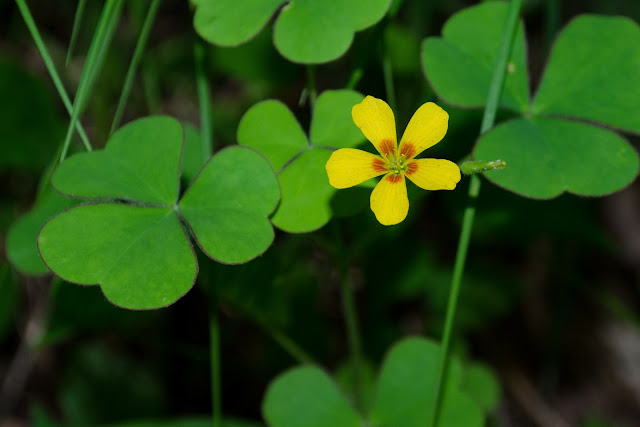Around lunch we decided to head down to Yellow Springs, outside of Dayton. Our goal was Glen Helen Nature Preserve. After a nice lunch at Peach's Bar and Grill, we headed, quite literally, right across the street to "The Glen."
Glen Helen Nature Preserve is an area owned by the Antioch College in Yellow Springs. Glen Helen is about 1000 acres and was designated as a National Natural Landmark in 1965.
My intent with this visit was more photography based versus nature based, fair warning.
So why is the town of Yellow Springs called Yellow Springs? Well, it's this thing right here. This spring within Glen Helen is the namesake of the town. As you can see, in person it's more of an orange than a yellow from the high iron content. From what I've read, this place was well known to the Shawnees. They believed the spring water held healing properties, a notion carried on by the early white settlers. It is said that even Tecumseh frequented the spring.
Another shot of the spring. This spring is located off a Native American path known as the Bullskin Trace, an ancient pathway that led from Lake Erie to the Ohio River. This path was created by migrating bison and other animals before being used by the Native Americans. It was then used by explorers such as Daniel Boone and then the following pioneers, but it soon became a part of the Underground Railroad (of which the Antioch College of Yellow Springs, with its abolitionist president Horace Mann, was a major stop). Other Native American chiefs are said to have visited the spring for its "powers," including Blue Jacket, Blackhoof, Blackfish, and Little Turtle.
The spring water slides down the hill, cascading over a rocky area making a small waterfall, and finally into Yellow Springs Creek. However, this waterfall right here is located along a tributary to that Yellow Springs Creek. This creek has always interested me. Before this waterfall, the creek has a rock bottom. Hundreds and hundreds of years of erosion has sculpted the rock into many interesting features. As the water goes from that part to this waterfall, a whole new interesting geography takes place. This waterfall starts "the cascades" which is a series of falls and pools that is incredibly beautiful. I don't have any photos of the lower cascades because there were people swimming and I didn't want to come off as "creepy," but let me say you are not allowed to swim in this creek. The rules say so, so please follow them to protect the Glen.
And last, but not least, Glen Helen Nature Preserve is the site of the Raptor Center. The Raptor Center is an education center, but first and foremost its duty is to rehabilitate injured raptors, which include hawks, eagles, owls, and so on. The lighting was bad, but I was able to take this photo of a sleepy Barred Owl as he woke only enough to see what the intrusion was. The Raptor Center is definitely worth checking out if you like birds; it allows amazing views of amazing birds of prey, a complete win win situation.
Glen Helen Nature Preserve is definitely worth the visit. Easy access, many miles of hiking trails, and beautiful natural features make this park a great gem in Western Ohio.










